Calculus for Kids May 1, 2015 (Fridays)
This is the fourth meeting of a math circle inspired by calculus ideas. This week, we continue making an object in different ways. So the same Math Spark applies as last week (PDF).

Maria has returned from her trip to the Navajo Nation and brought something for the circle. It resembles one of the Math Words we’ve been talking about, integration. Let’s look at the design on top of the vase. What do you see?

This reminds us of Michele’s snail from last week.
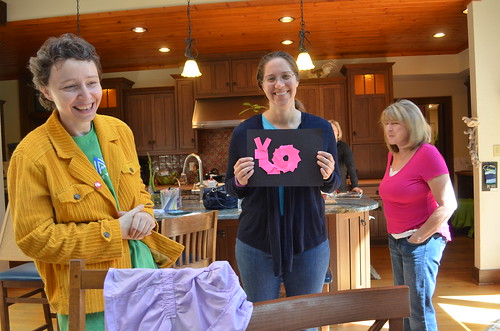
Maria is pointing out a symbol that goes around the circumference of the vase to Owen, and then to each child in turn: “What do you think this is?” Children think it’s a person sitting under the table, two letters L, and more – there are many different ways to read the same symbol! Maria learned from the trader that the original idea was two hands, symbolizing friendship.
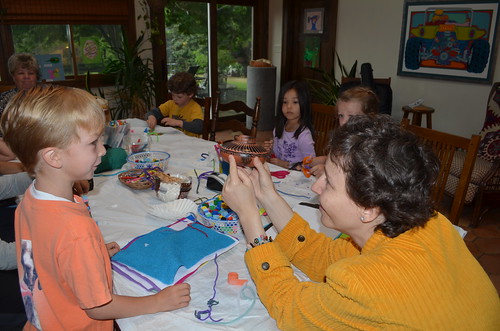
What would be an example of 1D? The kids say a string of hair or a pen. Hannah answered by holding a pen up. Invite children to answer in many “languages” – words, gestures, and showing things.
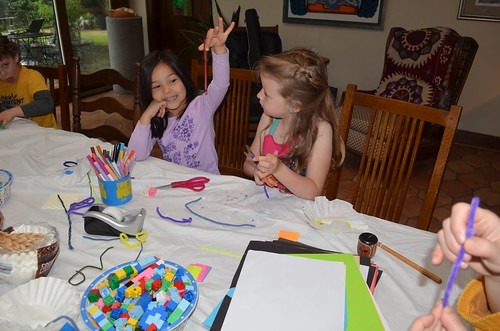
We are brainstorming about dimensions, and seeing many different things again. “What do you see in the 3D LEGO sculpture?” A cow? A bison? A snail? Priyesh says “A mystery!”
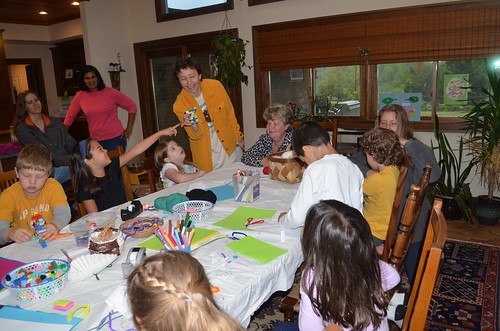
Maria is illustrating dimensions using the pink yarn. Stretching the pink yarn horizontally, it is 3D.
 \
\
Now, squeezing the yarn flat, 2D. Imagine squeezing it into a dot to vanish into 0 dimensions.
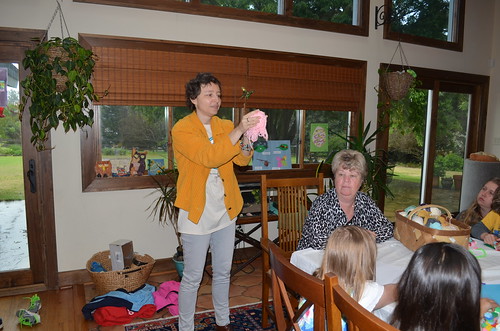
Maria asked the children to take 9 LEGO blocks each (as many as there are people) and come together.
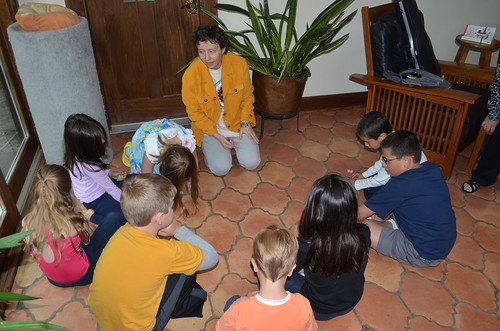
Hold the model of 0 dimensions (a LEGO block) and smile for the picture!

Each child integrated their “dots” into 1D lines. But then they wanted to add up all the lines together into a really tall tower (still a model of 1D though).


Would it stand by itself? “Abracadabra!” And then children wanted it to fall down, of course! It’s an irresistible desire when you build anything tall and narrow.
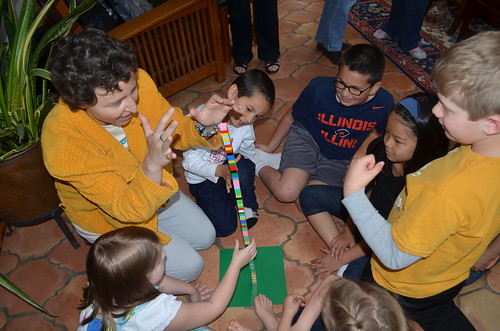
But if you attach the lines side by side, they model a 2D surface.
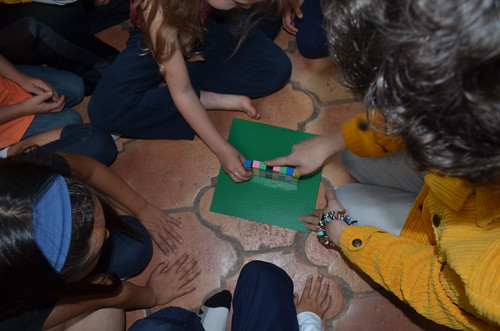
Here is the side view:
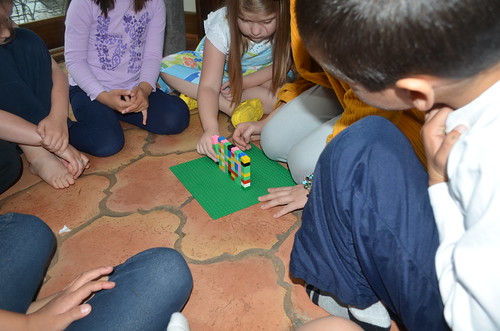
Uh-oh, 1 LEGO is missing! It turned out Julienne’s LEGO was missing, because she didn’t want to use a soiled LEGO piece on her tower (we got it replaced with a clean one). If we listen to kids and their small problems, everybody feels that they have a voice and power in the math circle, and it helps with mathematics.

Children brought up multiplication and its symbol, then addition, by using hand gestures. Maria added gestures for integration and infinity
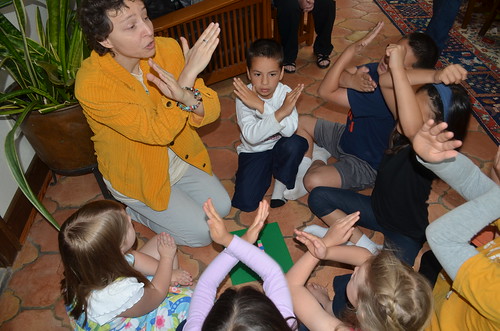
Integration: lift up one hand to your side and make a curve and let the other hand curve down.
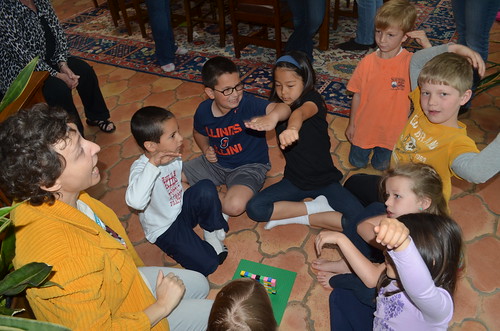
Infinity – hard to explain (hide thumbs in two side-by-side fists). Children said it does not look much like the infinity symbol, anyway.

It reminds us of a math dance cartoon:
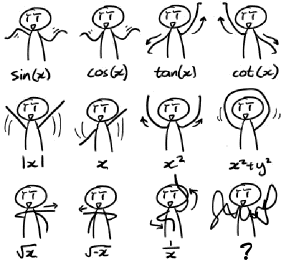
Parents had their own little math circle by the window while the children are working with Maria. They got all the way to the fourth dimension, looking up, discussing, and drawing tesseracts (4D cubes).
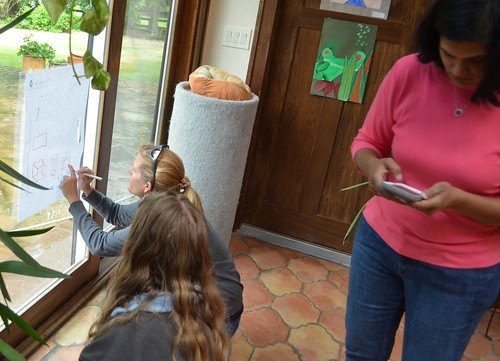
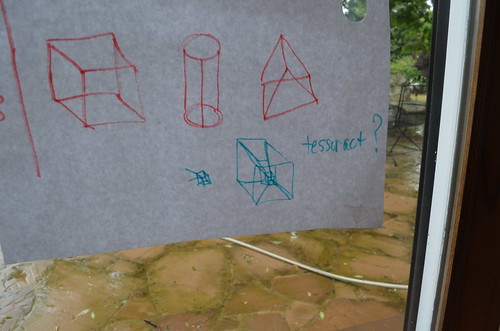
Meanwhile, children wanted to make the top layer pink, to show the 1D line across. It’s nice to see everyone’s working hands together – children in a small math circle, literally!
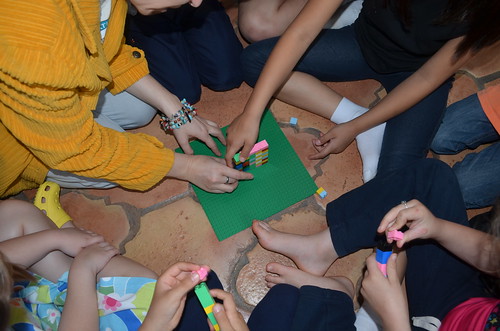
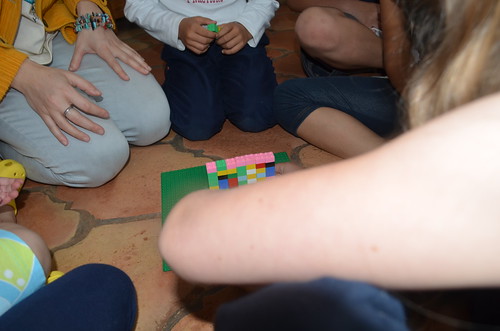
We kept that one green dot to stand for 0 dimensional point that can start a line… Then rebuilt the surface into a 3D cuboid.
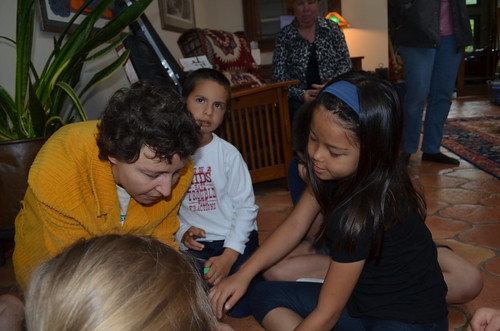
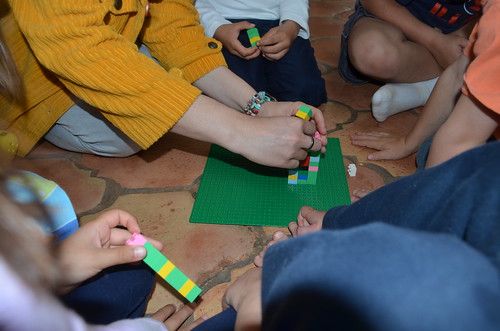
Serrin is trying to make a circle out of towers to integrate in a different way, but the floor is too uneven. We move to the table and everybody works on their circle-integration ideas.
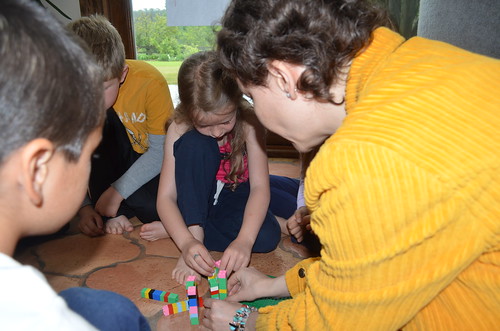
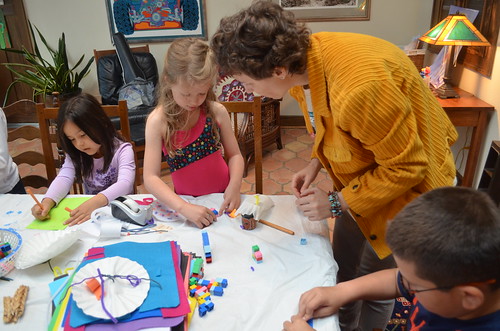
Maya’s circle – a line (1D) integrated out of points (0D).
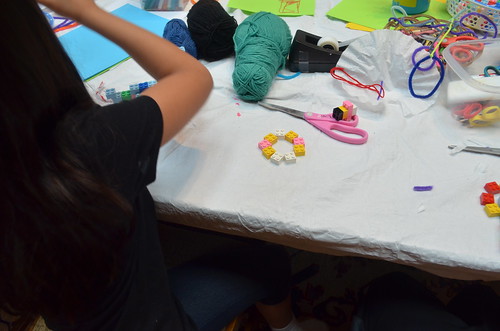
Maya with her 3D LEGO creations: a diamond-shaped flower approximating a circle on the left, a pyramid approximating a cone, and a puppy.

Front and side views of the puppy:
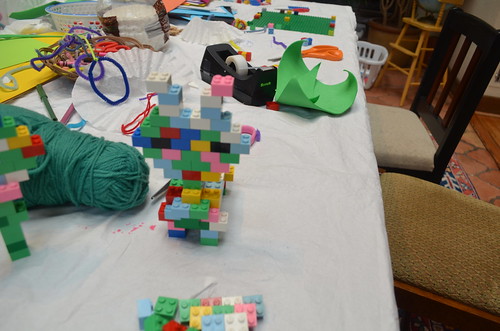

Priyesh is working on a similar diamond approximation of a circle on the LEGO board.

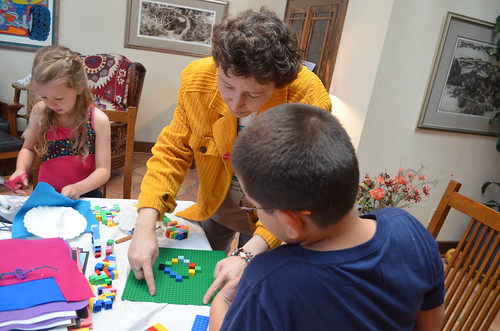
Owen is about to make an abstract imaginative ghost from a 2D surface (coffee filter).
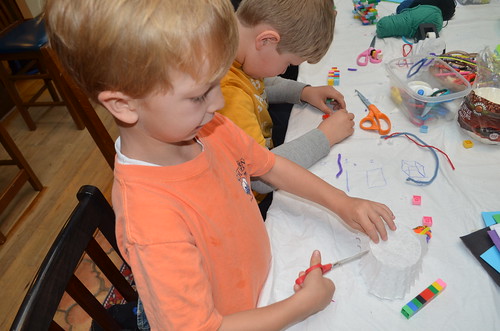
Julienne attached the LEGO blocks by sliding the bottom row half a block sideways.

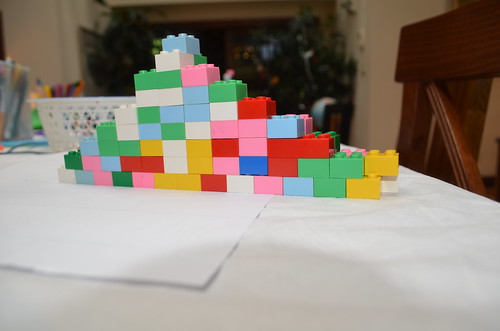
A paper model of our surface out of LEGO lines. This model is easier to roll into a cylinder than actual LEGOs.
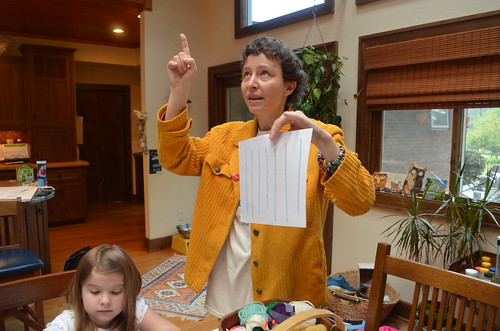

What if we rolled Julienne’s LEGO staircase (approximating a triangle) around like that? What would we get? A pyramid? A cone? A cylinder?
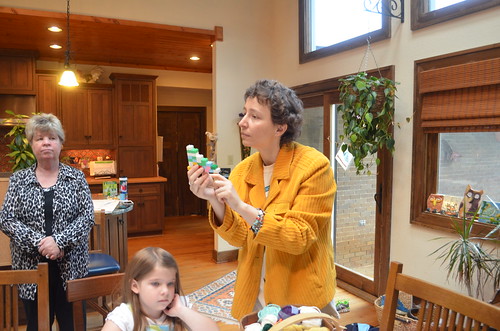
Maria cut a triangle out of orange craft foam to illustrate integration: “What shape would I get when I roll this triangle up?
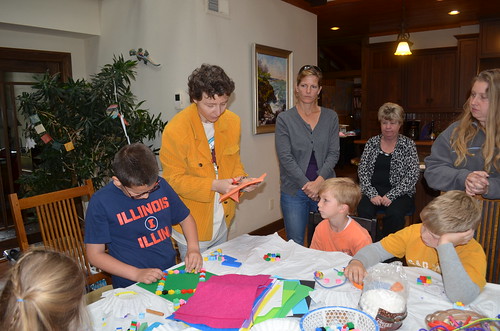
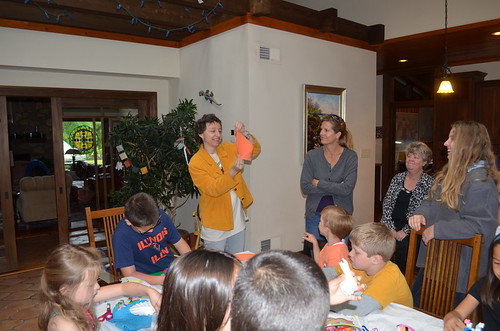
Moms are working on their triangles as well.
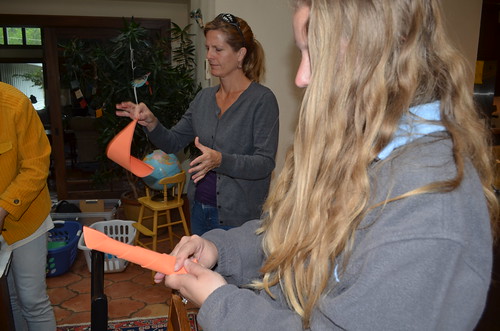
What should we call this shape?
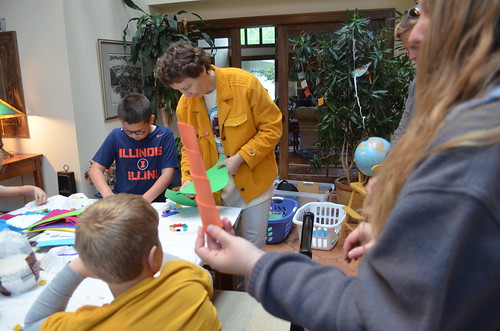
When we try to define something that’s unfamiliar and new it can be both an exciting discovery and a frustrating experience!
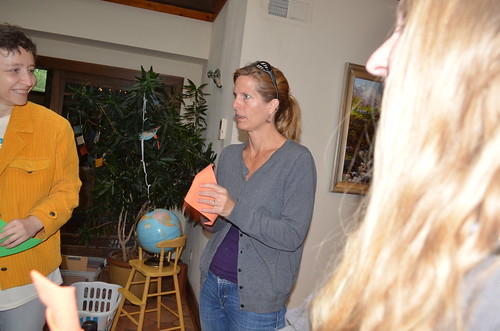
Maria is about to show another example of integration, a cylinder made by rolling up a rectangle of craft foam.
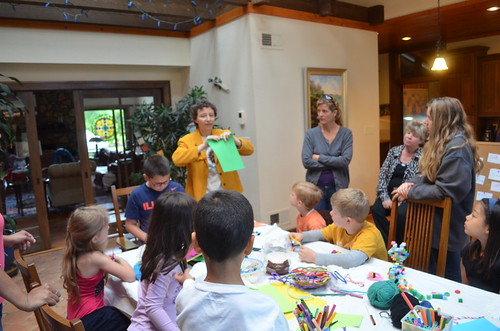
Jake building with LEGO blocks. He worked for a while figuring out the roof’s angle for his house. Slopes!

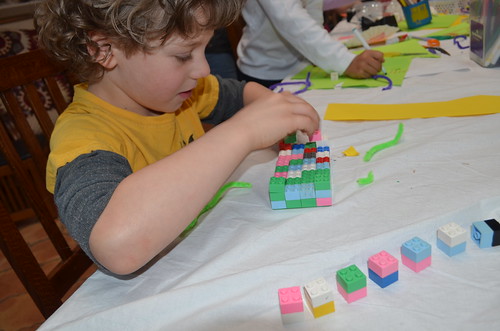
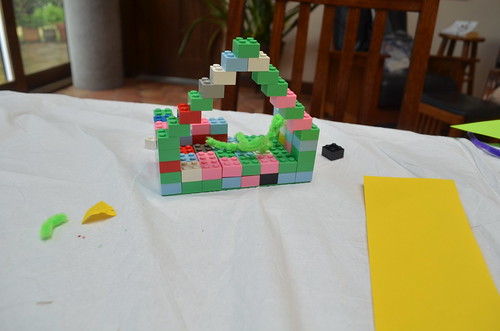
Jake decided to go back and work some more on his LEGO while the circle watched the video at the end. All the activities are voluntary, and sometimes children decide to work on their own projects instead. There are studies that show it does not prevent them from learning the content the rest of the group explores (they absorb it anyway). This ability to choose activities supports ownership and agency in mathematics.
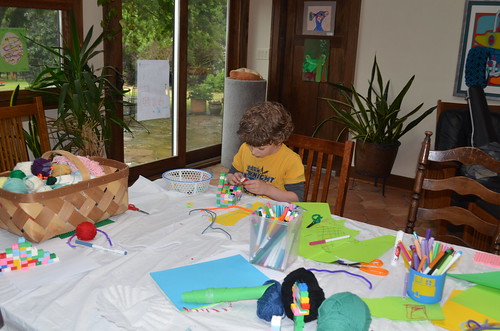
Eashan cut out a triangle and drew straight lines across to show integration of a shape out of lines, then cut out the extras so it looked really neat.

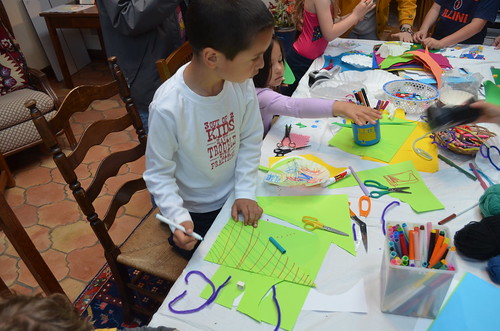

Do you see beautiful mathematics in the chaos of papers and crafts? We do! From Eashan’s table:
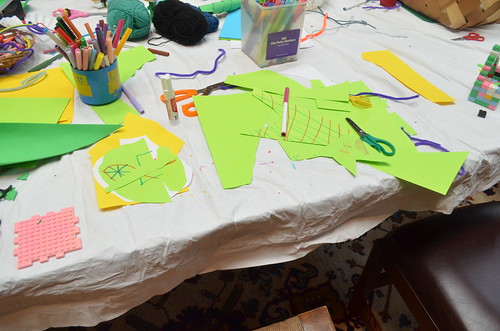
Hannah’s volcanoes, integrated out of lava flow lines:

From Hannah’s table:


“Mess” by LoonarBaboon.com – believing is seeing in pretend-play and mathematics.
Priyesh and Serrin are trying to make a circle together, by using LEGO blocks on the board. Look at the chaotic busy working table in the background!
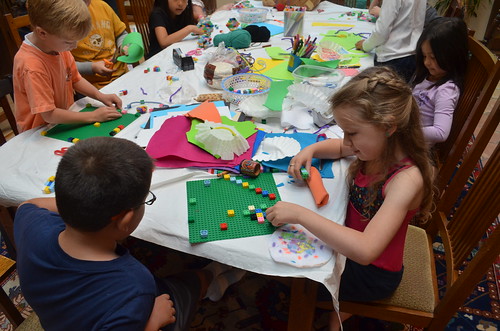
Learning is playing and playing is learning.
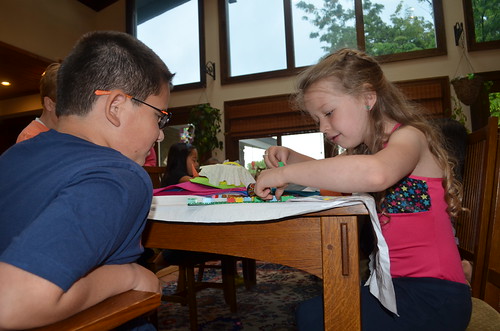
From Priyesh and Serrin’s table:

Smile, Owen! He made an imaginary plane (ship or cargo?) out of LEGO on the 2D green board. Check out symmetries.

Charlie is rolling up all three corners of a triangle – something grown-ups have not tried yet:
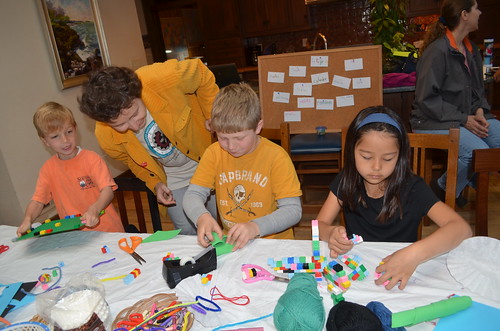
The circle is gathered around the kitchen table to watch “The Dot and the Line: A Romance in Lower Mathematics.”
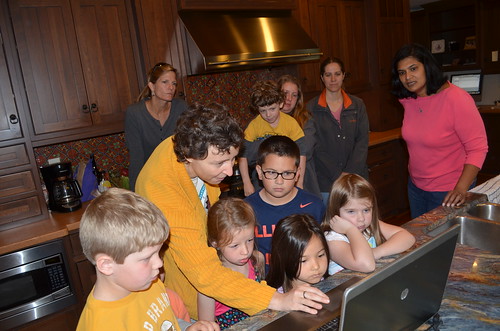
Curious, amused, and giggly faces!
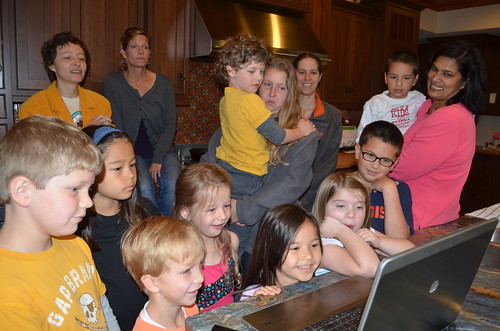
The views from afar and up close.
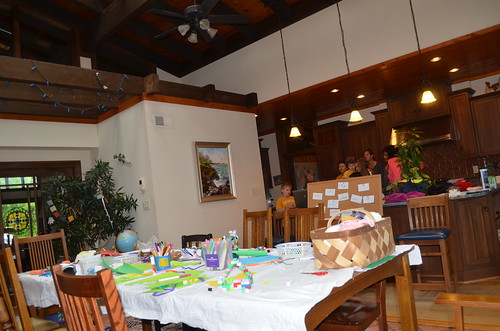


Photos by Erin Song, captions by Erin Song and Maria Droujkova, Math Spark by Kalid Azad, Shelley Nash, and Maria Droujkova, edited by Ray Droujkov.
Related Posts
Posted in Make







Leave a Reply